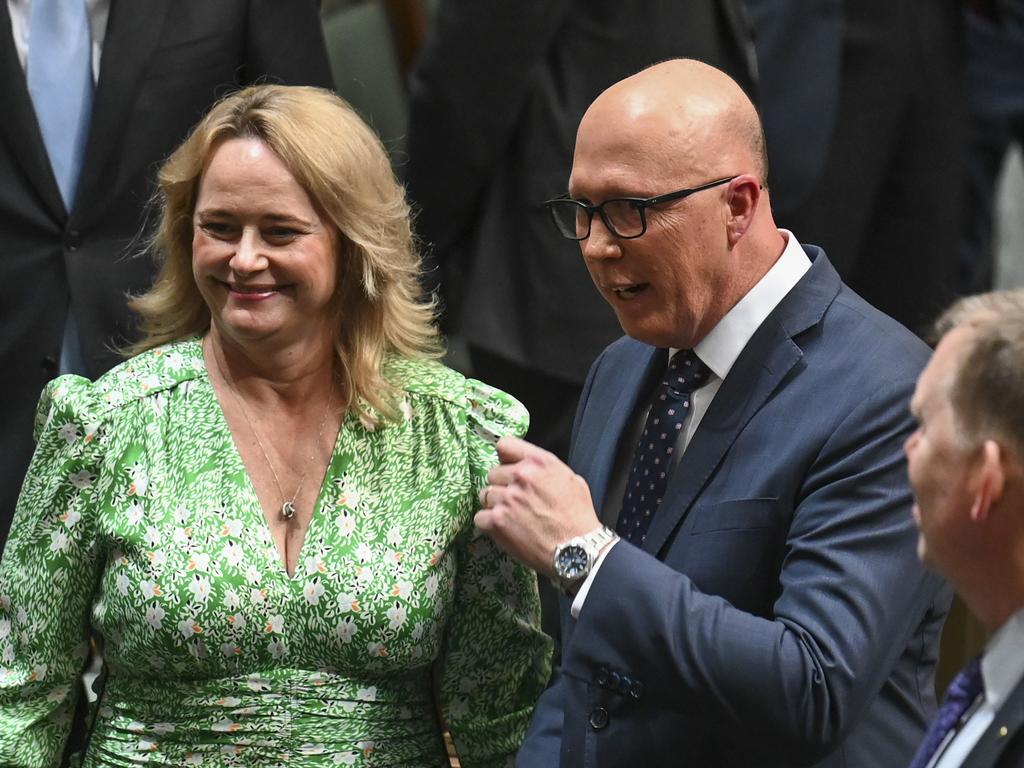
“We don’t have a nuclear power industry, a regulatory or safety framework, nuclear power expertise, or a nuclear power workforce,” he said. “Building these capabilities would likely take decades.”
3 reasons why Peter Dutton’s nuclear plan is a dumb idea for Australia… pic.twitter.com/vmcxgoXxwW
— Chris Bowen (@Bowenchris) May 13, 2023
If Bowen is right, he should explain that to the Defence Minister, since Australia’s plan to acquire nuclear submarines would be dead in the water.
Fortunately, however, he was busking, which is what people tend to do when they take to Instagram, the go-to platform for performative activists from Black Lives Matter to the trans movement.
Bowen posted some spooky pictures of nuclear waste, claiming that “we’ve struggled here in Australia to store the nuclear fuel rods from our one small medical reactor”.
That would come as news to the people at ANSTO who use plates, not rods, and have been storing nuclear waste safely on site since 1963.
Australia’s historic aversion to nuclear power makes it an outlier among developed and developing nations.
Bowen is determined to keep it that way but is fighting against the tide as others around the world conclude that it is all but impossible to meet our emissions reduction targets without nuclear.

Canada, China, the US and the UK are among the 32 countries using zero-emission nuclear power today.
Some 50 countries are exploring or investing in small modular reactors, the groundbreaking technology that vastly reduces capital costs and construction times. Bowen’s main argument, that nuclear power is too expensive and too difficult to consider, is looking increasingly feeble as the financial and technical challenges of the current plan become apparent.
In the absence of a progress report on Bowen’s plan to install 22,000 solar panels a day, we must assume we’re not keeping up.
The 2GW of pumped hydro power promised with Snowy 2.0 won’t now be available until the end of 2029. Capital costs are approaching $10bn, plus billions more to build a network of new transmission lines.
Meanwhile, the centre-left government in Canada is putting $1.1bn into the country’s first SMR in Ontario, which is scheduled to go online in 2028.
Bowen claims in his Instagram post that installing an SMR will cost $5bn. He put up a scare-map showing 80 of them dotted around the country and claimed the total cost would be $400bn.
Next time parliament sits, Bowen might like to show his confidence in those claims by reading them into Hansard. His preference for an ephemeral digital medium without a transcript, let alone footnotes, suggests he knows them to be tosh.

In 2020, Sydney-based consultancy SMR Nuclear Technology commissioned US multinational engineering and construction firm Fluor to calculate the cost of deploying a standard 12-module NuScale SMR in Australia with a net output of 884 MWe.
Fluor calculated the capital cost excluding land acquisition would be $5.4bn for the first one, after which costs would reduce substantially because of economies of scale and supply chain efficiencies.
Between 60 and 80 per cent of fabrication occurs in factories, allowing nuclear reactors to be serially manufactured in a similar manner to aircraft. The International Energy Authority says if SMRs can be simplified, standardised and modularised, their commercial viability accelerates.
SMRs will not be “spread around the country”, as Bowen claims. That would be silly when they can be installed on the sites of existing generators and plugged into the same poles and wires.
The $100bn or so Labor plans to spend on new transmission lines to support the dispersed generation from wind, solar and hydro can be spent on something more useful.
Bowen’s chief source of evidence that nuclear is expensive is drawn from a report on generation costs by the CSIRO, which estimates the cost of SMRs in 2030 at $130 and $311 per MWh compared to $56 and $83MWh for variable renewables.
The findings are highly contentious and, while the arguments are methodological, the influence of the CSIRO GenCost report on energy policy debate means they must be carefully examined. Critics point to glaring inconsistencies, incorrect assumptions and omissions. There are no estimates of the low price to end-users of predictable always-on electricity – the fatal flaw in GenCost.

Their calculations expressly exclude the capital cost of firmed variable renewable energy installed and paid for by 2030, including Snowy 2.0 and the massive expansions in transmission and other storage capacity. The assumed capital costs of SMRs are included, however, and CSIRO assumes those costs will not come down.
It assumes SMRs will be working at only 60-80 per cent of the capacity since under the current rules wind and solar power would generally take priority when available. If the assumptions are switched to assume that SMRs will work close to full capacity the cost is reduced considerably.
The CSIRO does take account of the additional connection costs and losses for dispersed variable renewable generators distant from the main population centres
In summary, the 2021-22 GenCost report is a reputationally destructive document the CSIRO would be wise to withdraw before it leads Bowen and his bureaucrats any further up the garden path.
Dutton, meanwhile, deserves much credit for firing the starting gun in a political debate about nuclear energy at least 18 months before an election is likely to be called.

The scars of Labor’s successful anti-nuclear campaign at the 2007 campaign, led by Anthony Albanese, have taken a long time to heal.
Circumstances have changed greatly in the last 16 years. The political imperative to reduce emissions has intensified, the shortcomings of wind and solar have become apparent, Labor has conceded that nuclear propulsion is essential for defence, and civil nuclear technology has advanced considerably.
We have also witnessed the rise of a renewable industrial complex, however, which will surely wield its influence and resources to fight like a cornered cat against nuclear, despite its ability to solve the emissions challenge at minimal cost.
That, and the ideological intransigence of the left, are the biggest obstacles to lifting the nuclear moratorium, the door that bars our way towards a rational, zero-emissions energy policy.
Nick Cater is senior fellow at the Menzies Research Centre








There was a time when a cabinet minister would debate matters of state on the floor of parliament. Today we have Instagram and Twitter, the social media forums Chris Bowen chose on Friday to explain why Peter Dutton’s suggestion that Australia should consider nuclear power was dumb.